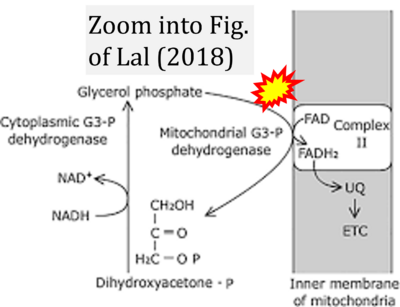Difference between revisions of "Lal 2018 Springer"
| Line 1: | Line 1: | ||
{{Publication | {{Publication | ||
|title=Lal MA (2018) Respiration. In: Bhatla SC, Lal MA (eds) Plant physiology, development and metabolism. Springer, Singapore:253-314. https://doi.org/10.1007/978-981-13-2023-1_7 | |title=Lal MA (2018) Respiration. In: Bhatla SC, Lal MA (eds) Plant physiology, development and metabolism. Springer, Singapore:253-314. https://doi.org/10.1007/978-981-13-2023-1_7 | ||
|info=[https://link.springer.com/chapter/10.1007/978-981-13-2023-1_7 | |info=[https://link.springer.com/chapter/10.1007/978-981-13-2023-1_7 Springer Link] | ||
|authors=Lal AM | |authors=Lal AM | ||
|year=2018 | |year=2018 | ||
Latest revision as of 22:12, 18 December 2023
| Lal MA (2018) Respiration. In: Bhatla SC, Lal MA (eds) Plant physiology, development and metabolism. Springer, Singapore:253-314. https://doi.org/10.1007/978-981-13-2023-1_7 |
Lal AM (2018) Springer, Singapore
Abstract: Energy requirement for growth and functions in all living beings is met through ATP generated during respiration. Additionally in plants, light energy is conserved as ATP and NADPH, which are subsequently utilized for CO2 assimilation. Besides, carbohydrates thus synthesized are consumed by animals as the primary source of energy. Though in animals lipids may also be consumed, in plants carbohydrates remain the main energy source. Plants store carbohydrates mainly as starch since it is osmotically inactive. All carbon accumulation in plants is the result of photosynthesis, which remains the source of energy as well as for biosynthesis of various other biomolecules. In cells hexose monophosphate pool constitutes an important component of carbohydrate metabolism. Hexose monophosphate pool maintained in cells consists of glucose 6-phosphate, glucose 1-phosphate, and fructose 6-phosphate. At the sinks, sucrose translocated from source is consumed during respiration. Respiration is an exergonic redox reaction with ΔG0′ value −5760 kJ.mol−1 of sucrose. Sucrose is oxidized to CO2 coupled with the reduction of O2 to water as follows.
• Bioblast editor: Gnaiger E
Correction: FADH2 and Complex II
- FADH2 is shown as the substrate feeding electrons into Complex II (CII). This is wrong and requires correction - for details see Gnaiger (2024).
- Gnaiger E (2024) Complex II ambiguities ― FADH2 in the electron transfer system. J Biol Chem 300:105470. https://doi.org/10.1016/j.jbc.2023.105470 - »Bioblast link«
Labels:
Pathway: S, Gp


